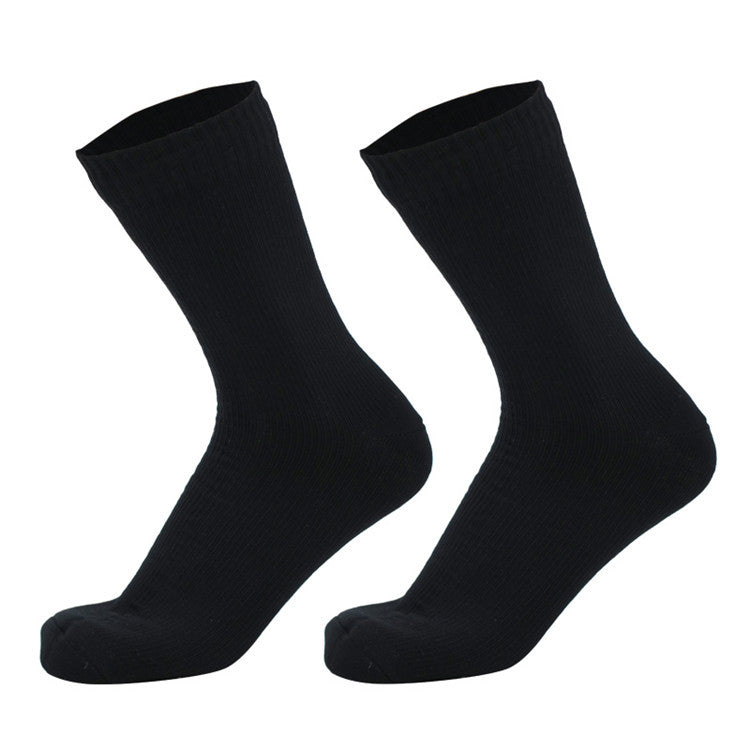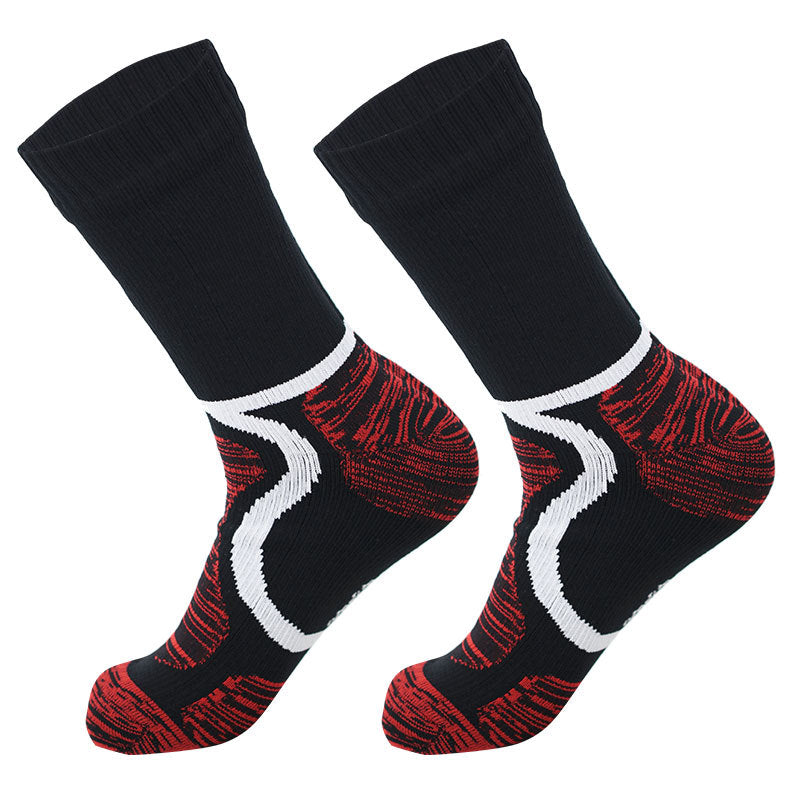
Waterproof Socks: When to Use Them
Share
Updated August 2025
Waterproof socks are for weather, not sweat. They keep rain and puddles out while wicking your sweat away—perfect for commutes, muddy trails, and early-morning sports sidelines.

See Them In Water (Real Use)
Designed for rain, splashes, and wet ground. Avoid full submersion past the cuff—water can enter from the top opening.
How Waterproof Socks Work
- Outer knit: abrasion-resistant shell protects the membrane.
- Waterproof/breathable barrier: blocks external water while letting sweat vapor escape.
- Wicking inner lining: moves moisture off skin to reduce chill and hot spots.
When to Use Them
- Rainy commutes and dog walks
- Muddy trails and wet grass
- Side-line sports, early fishing, damp campsites
When Not to Use
- Hot studios or heavy cardio indoors—choose breathable athletic socks instead.
- Full submersion (they’re water-resistant, not waders).
Best Pick

Use-Case Cheatsheet
| Scenario | Why waterproof helps | Tip |
|---|---|---|
| Commute in rain | Keeps socks dry inside sneakers | Pair with water-resistant shoes |
| Muddy trail hike | Blocks splash; reduces blisters | Air out after long efforts |
| Sideline sports | Prevents cold-wet feet standing still | Add a thin liner for extra warmth |
Care
- Rinse after muddy use; wash cold; air-dry.
- Don’t wring aggressively—protects the membrane.
FAQs
Do waterproof socks make feet sweat?
They’re breathable, but warmer than thin athletic socks. Use them for wet conditions, not hot studios.
Can I use them for stream crossings?
Brief splashes are fine; full submersion can overwhelm the cuff. Dry afterward.
More guides: Browse all articles in Vieora Sock Guides.


